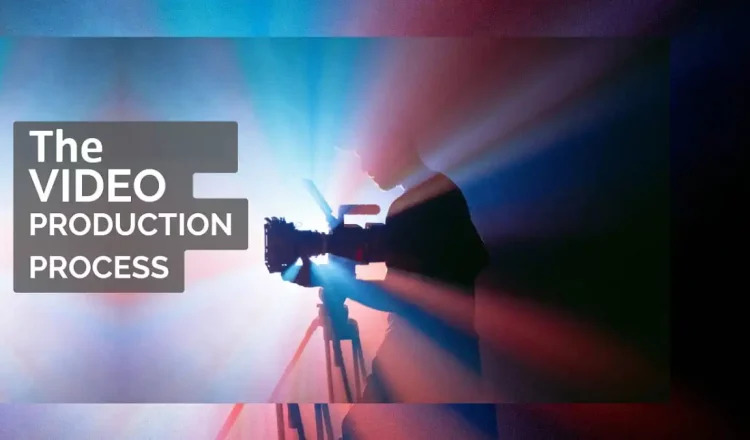Introduction
Videos have become a powerful medium to convey messages, tell stories, and promote businesses. In today’s digital age, video production has become more accessible than ever. Whether you’re a novice or an experienced content creator, mastering the video production process is crucial to achieving professional results. In this easy step-by-step guide, we’ll walk you through each stage of video production Sydney, providing valuable insights, tips, and best practices to help you create compelling videos that captivate your audience.
Table of Contents
- Introduction
- Pre-Production: Planning for Success
- Production: Bringing Your Vision to Life
- Post-Production: Polishing Your Masterpiece
- Conclusion
- FAQs
- FAQ 1: What equipment do I need to start with video production?
- FAQ 2: How can I ensure my video content aligns with my target audience?
- FAQ 3: Is it necessary to use professional actors for my videos?
- FAQ 4: How can I keep my video production within budget?
- FAQ 5: What are some effective video marketing strategies?
- FAQ 6: How long should my video be for maximum engagement?
Pre-Production: Planning for Success
Before you start shooting, careful planning is essential to ensure a successful video production. Pre-production involves a series of critical steps that lay the groundwork for the entire project.
Define your purpose and target audience
Before diving into the production process, clarify your video’s purpose and identify your target audience. Are you creating an educational video, a product demo, or a brand promotion? Understanding your objectives will video production guide your content creation. Equally important is knowing your target audience—what are their interests, preferences, and pain points? Tailoring your video to resonate with your audience will increase its impact.
Craft a Compelling Script
Your script is the backbone of your video. Craft a compelling narrative that aligns with your purpose and engages your audience. Create a storyboard to visualize the scenes and shots you want to capture. A well-structured script ensures smooth filming and saves time during production.
Assemble the Right Team and Equipment

A successful video production relies on having the right team and equipment. Depending on your project’s scale, you may need a director, camera operators, lighting experts, and actors. Ensure you have high-quality cameras, microphones, and lighting equipment to capture professional-grade footage.
Secure Locations and Permits
If your video requires specific locations, scout for suitable spots and obtain the necessary permits. Securing locations in advance saves time during production and minimizes disruptions.
Plan the Production Schedule
Creating a detailed production schedule is essential to keep the project on track. Allocate sufficient time for each shoot, allowing for unexpected delays or revisions. Efficient time management will contribute to a smooth and stress-free production process.
Production: Bringing Your Vision to Life
With thorough pre-production completed, it’s time to bring your creative vision to life during the production phase.
Setting Up the Shot
To capture captivating footage, pay attention to camera settings, framing, and composition. Use techniques like the rule of thirds and leading lines to create visually appealing shots.
Audio Recording and Management
Clear and crisp audio is crucial for a professional video. Invest in quality microphones and record voice overs and sound effects separately. Properly manage audio during filming to avoid any unwanted background noise.
Lighting for Visual Impact
Lighting significantly impacts the mood and tone of your video. Experiment with different lighting techniques to achieve the desired visual impact. For indoor shoots, consider using three-point lighting to illuminate the subject effectively.
Directing the Talent
If your video involves actors or presenters, the effective direction is vital. Provide clear instructions and feedback to ensure natural and engaging performances.
Capturing B-Roll Footage
B-Roll footage complements your main footage and enhances the overall storytelling. Capture additional footage to use during editing, covering supporting visuals and context.
Post-Production: Polishing Your Masterpiece
Once you’ve completed filming, post-production is where the magic happens. This phase involves editing, adding effects, and perfecting the final video.
Video Editing Basics
Select a reliable video editing software that suits your needs and proficiency level. Arrange clips on the timeline, trimming and rearranging them to craft a cohesive story.
Adding Transitions and Effects
Enhance the flow of your video by adding smooth transitions between scenes. Incorporate visual effects and animation to captivate your audience.
Color Correction and Grading
Color correction ensures your video appears natural and consistent, while color grading sets the mood and tone. Strive for a visually appealing and coherent look throughout the video.
Incorporating Audio Elements
Integrate background music that complements the video’s mood and enhances the viewing experience. Balance audio levels and fine-tune sound mixing to create a professional soundscape.
Adding Text and Graphics
Include text overlays and lower thirds to convey important information or reinforce key points. Use graphic templates to add visual interest and branding elements.
Conclusion
Congratulations! You’ve now mastered the easy step-by-step guide to the video production process. From meticulous planning during pre-production to adding the final touches in post-production, each stage plays a crucial role in creating captivating videos. Remember to define your objectives, understand your target audience, and craft a compelling script that resonates with your viewers.
Throughout the production process, prioritize clear audio, effective lighting, and engaging visual elements to elevate the quality of your videos. Embrace the power of storytelling and use creative techniques to leave a lasting impact on your audience.
With dedication, practice, and continuous improvement, you’ll gain confidence and expertise in video production. So go ahead and unleash your creativity, and start creating remarkable videos that will captivate and inspire your audience.
FAQs
FAQ 1: What equipment do I need to start with video production?
To start with video production, you’ll need a good-quality camera, tripod, external microphone, and basic lighting equipment. As you progress, you can invest in more advanced gear based on your project requirements.
FAQ 2: How can I ensure my video content aligns with my target audience?
Conduct thorough research on your target audience’s preferences, interests, and pain points. Tailor your script and visuals to resonate with their needs, creating content that speaks directly to them.
FAQ 3: Is it necessary to use professional actors for my videos?
While professional actors can add polish to your videos, they aren’t always necessary. Authenticity is equally important, and using employees or customers as brand ambassadors can create a more genuine connection with your audience.
FAQ 4: How can I keep my video production within budget?
To manage your budget effectively, plan your video carefully during pre-production. Identify areas where you can cut costs without compromising on quality. Be resourceful and consider borrowing equipment or filming in locations that don’t require permits.
FAQ 5: What are some effective video marketing strategies?
After completing your video, promote it on various platforms, including social media, YouTube, and your website. Collaborate with influencers and industry partners to expand your reach. Analyze data
FAQ 6: How long should my video be for maximum engagement?
The ideal video length varies depending on the platform and content type. For social media, shorter videos are generally more effective, ranging from 15 to 60 seconds, as attention spans are shorter. On platforms like YouTube, longer videos can perform well if they provide valuable information or entertainment, usually between 5 to 10 minutes. Ultimately, focus on delivering compelling content that captures your audience’s attention, regardless of the video’s length.


